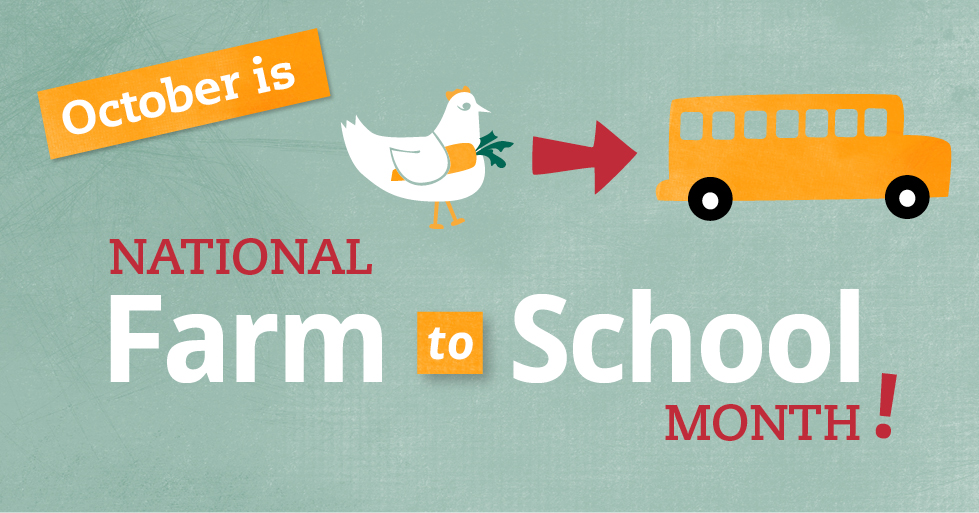STEM, DIY Projects, Conservation & History: Partnership Ideas for Farm to School Month
By Daniel W. Hatcher, MPH, Director of Community Partnerships, Alliance for a Healthier Generation
At the Alliance for a Healthier Generation, we believe in the power of partnership with business. We are passionate about innovative solutions, like our newest one with Amazon Business, that bring bold change for children’s health.
To celebrate Farm to School Month, here are five ideas for collaborating with local businesses while linking school, afterschool and families. In honor of a new report from The Aspen Institute that underscores the importance of social and emotional learning, I have made an effort to focus on affirming activities that foster positive connections and welcoming spaces.

Build Bridges with STEM
In The Power of Partnerships with the Business Community, I emphasize that “healthy children grow up to be consumers with increased earning and buying power.” Farm to School Month is a tremendous opportunity to build bridges with local STEM-focused companies. Agriculture is uniquely situated at the intersection of STEM and wellness. If you’re hosting an event or celebration this month, invite business leaders to speak with your students and work together on fun enrichment activities like Apples Turning Brown! (page 3), that intentionally link nutrition with science.
To help grow the STEM and wellness conversation, check out our new educational brief, STEM and Wellness: A Powerful Equation for Equity and recorded workshop during the National AfterSchool Association Virtual Convention in November.
Start Simple and Go Do-it-Yourself (DIY)
Swing by your arts and craft store and ask them to sponsor a farm-focused bulletin board to cultivate curiosity and brighten up your physical space. Spotlight a local farm and regularly feature “Foods of the Month.” October’s Food of the Month theme is Apples, Pears and Winter Squash. Why not ask a local orchard grower to serve as a guest speaker for your next family event. At your gathering, host a fresh fruit taste test.
Take a bite out of childhood hunger with 6 more apple themed ideas from a past article I wrote for School Breakfast Week. Don’t forget to provide take-home printables, like these from USDA, highlighting seasonal produce that’s budget friendly. Find out if your local art or hardware store will donate supplies year-round for creative activities.

Turn Field Trips into Long Term Relationships
A simple way to engage with local business leaders is through field trips, but don’t stop there. Whether you visit a creamery or a vegetable farm, foster an ongoing relationship by starting a pen pal project with a local farmer. After your field trip, dialogue with students and find out what their interests are. Maybe even organize a mini Youth-Hosted Forum to amplify youth voice in your community. Ask the farmer you visit to provide regular updates on crops and progress photos of animals and plants. A Farm to School Month field trip could turn into a long-term relationship with new adult allies. Imagine your next fall festival or a healthy Halloween potluck featuring local produce provided by new partners. Never stop searching for extensions and collaborators. Link field trips with literacy goals too! Why not collaborate with your library on an agriculture themed book nook?
Partner with Parks
Farm to School Month is the perfect time to work with parks and recreation and other organizations with roots in nature. Conservation-focused community celebrations and service-learning projects are a great way to promote critical thinking and social responsibility while reinforcing healthy habits. Even simple healthy hydration activities can inspire a greater awareness of local water sources and sustainable farming practices.

Build Community History
As I explored in Creating a More Connected World Through Local Agriculture: 9 Voices, agriculture has the power to connect us and honor our collective history. Invite retired farmers to speak with students to help them understand the historic value of farming in your community. Young professionals in the farming and agriculture field can inspire career and trade exploration. Help students establish meaningful connections and build communication skills by presenting to business leaders on issues they care about. If you have a school garden, work with your local county extension agents to turn produce into recipes and partner with local restaurant owners to feature student creations. Use Farm to School Month as an opportunity to connect students with the world around them in a meaningful way.
I hope this article has given you a few new ideas for business partnerships. Which activity or idea will you try? Share your ideas with me on Twitter using @hatchdw. I’d love to add to this list and hear your success stories.
Want even more inspiration? Read how Kelliher School District started a farm to school program and made student wellness a priority.
BONUS ACTIVITY: Farm to School Month Energizer
Have you been sitting for a while? Why not take a fitness break? I adapted our Healthier Generation Task Cards (#17) into a simple activity with a farm and math twist. Ready? Gather your coworkers and act out this math problem for a quick energizer. 15 crows were flying in the air and 7 stopped for a snack in a cornfield. How many were left flying?
Simple right?! Happy Farm to School Month.
Read more from Daniel Hatcher on the Alliance for a Healthier Generation's New & Notable blog.
Photo credit for all photos: Alliance for a Healthier Generation










